Goa Chapter
30 Sep - 3 Oct 2023
CompletedOverview
Very few know Goa for its temples, but it has some of the greatest temple ecosystems of Bhāratavarṣa. Goa chapter will lead you through the charm of small Goan towns, lush green countryside, fast flowing rivers, jungle trails, mist-covered mountains, quiet highways, and coconut-lined bylanes.
Almost every single temple on the coast was destroyed. But the Goans shifted entire kÅetras inside, in safer parts of Goa like Ponda, recreating the sacred temple ecosystems. Goa is the story of the reclamation and rebuilding of our great heritage.
Bá¹hat Anveṣī - Goa chapter will lead you through the charm of small Goan towns, lush green countryside, fast flowing rivers, jungle trails, mist-covered mountains, quiet highways, and coconut-lined bylanes to some of the most unique temples in BhÄratavará¹£a, and it will make you travel through the history and culture of BhÄratavará¹£a in what is perhaps one of the greatest stories of cultural reclamation.
Highlights
15 significant Temples of Goa, authentic local cuisine and a visit to a Saraswat Brahmin traditional house
Story of Hindu courage, revival and assimilation
Local expert of Goan heritage and culture, the renowned historian and archaeologist - Sawani Shetye
A cultural performance by a renowned artist
Sūtradhāra - Your Temple Expert

Pankaj Saxena
Pankaj is an author on Hindu temples, arts, literature, history and culture. His writing explains the beauty of Sanātana Dharma through stories about traditions, communities and culture. He has a deep interest in cultural anthropology, evolutionary biology and ecology, and has visited more than 1600 Hindu temples.
Interested in this chapter?
We do not plan to repeat previously completed chapters in the near future. However, if you have a group of 15–20 interested individuals who'd love to explore this chapter, do write to us. We'd be happy to create a special on-demand Anveṣī experience just for your group.
Temples Covered
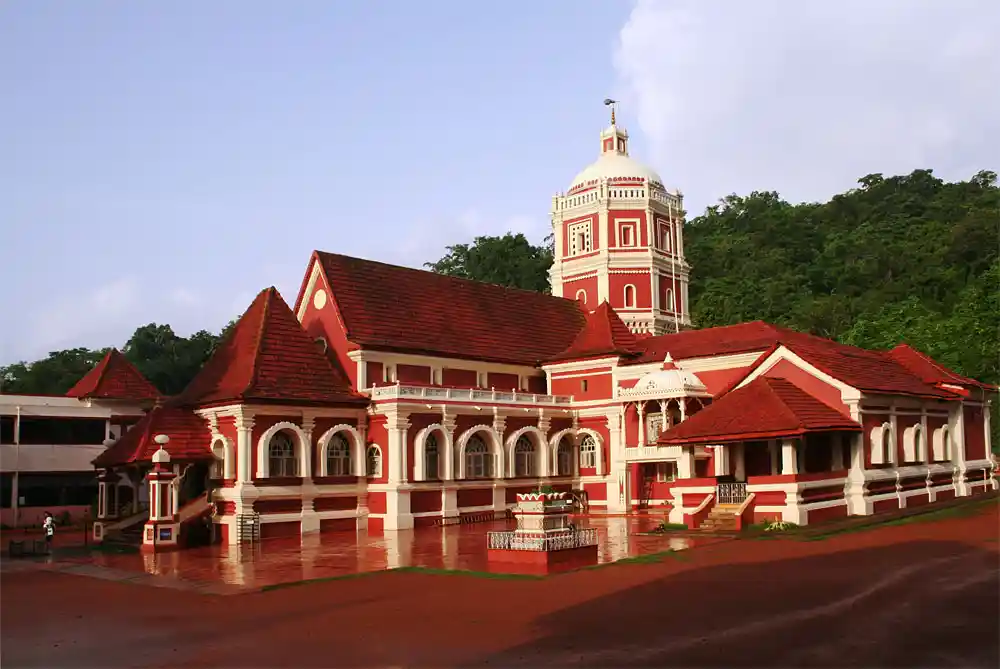
Śrī Śāntādurgā
Accompanied by Viṣṇu and Śiva, Devī Durgā resides in this temple in her calm, meditative form. For successfully meditating in a fierce war that broke out between the two, the goddess here is worshipped as "śāntādurgā"-bringer of peace. The original site of the worship of the Devī was in Keloshi, from where she was migrated to Kavalem, Ponda, her present abode. Here, the temple has been erected somewhere between 1713 AD to 1738 AD.

Lord Nāgueśi Shrine
The Lord Nāgueśi Shrine of Bandode gloriously remains standing in its original spot, unlike other Hindu temples of Goa that came under the "Velha Conquistas" or "new conquests" areas of the Portuguese. The ancient tāli/Kalyaṇi of this temple is highly sophisticated, effectively channeling water continuously from a natural stream passing from west to east through valves under the temple grounds. This temple houses the deity in his 'Svayambhu' form.
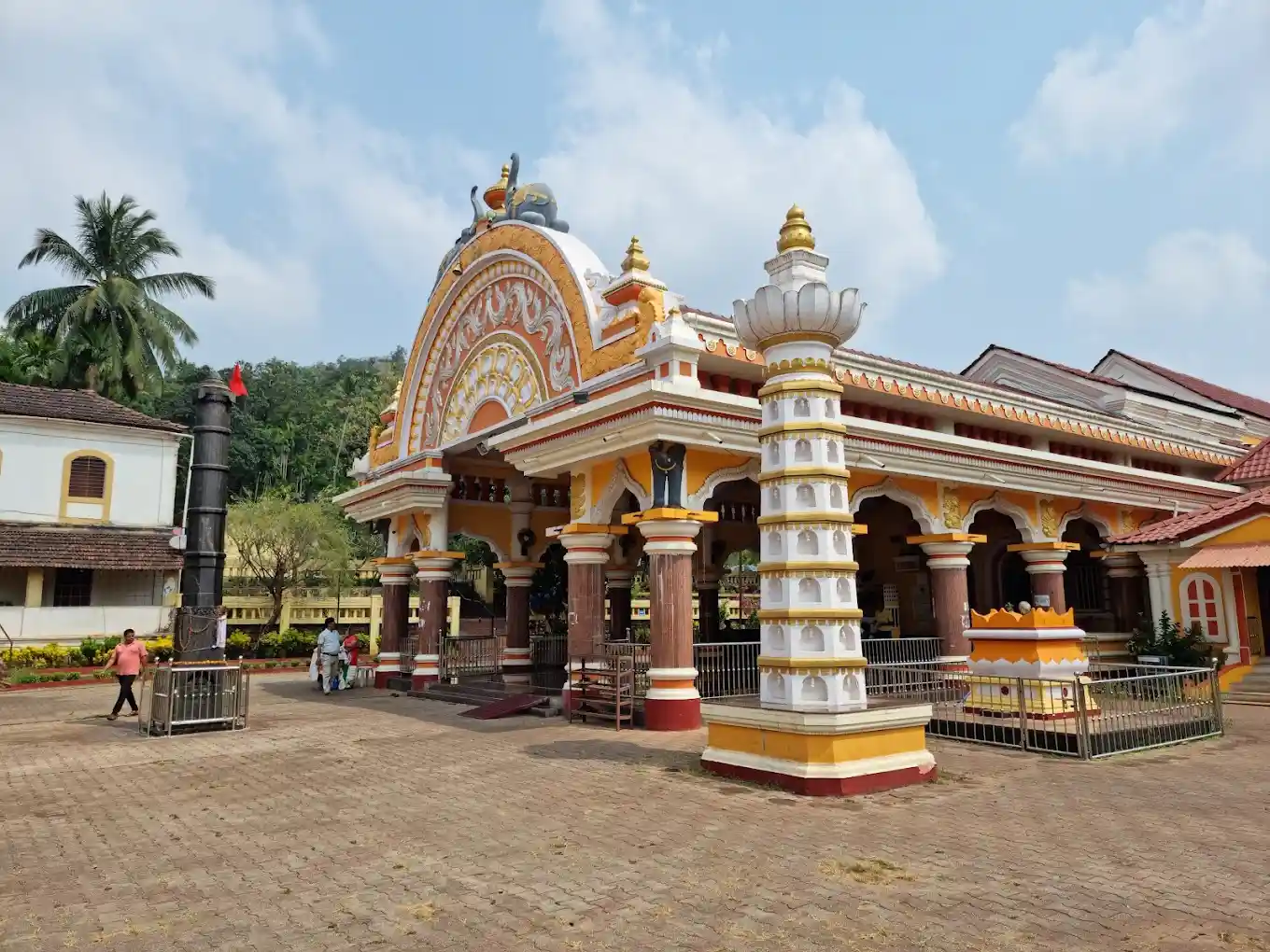
Māhālaxmi Temple
Based on stone plaques found during the reign of Nanjana Gosāvi Pratihasta over Goa, the temple of Goddess Māḥalaxmi of Bandivade has been in existence approximately since the year 1413. Interestingly, in the 15th century, another temple of Māhālaxmi was in existence in Colva of Salcette. One night, the idol of Māhālaxmi from this temple had to be smuggled away in the dead of the darkness to avoid persecution by the Portuguese. The thrilling tale of the two devotees Safto and Fato, who took the idol away in a trunk, to Talauli near Ponda, is well known. Till date, the people of Colva worship the sign of the goddess's feet. The idol was then migrated to her present abode and installed there.
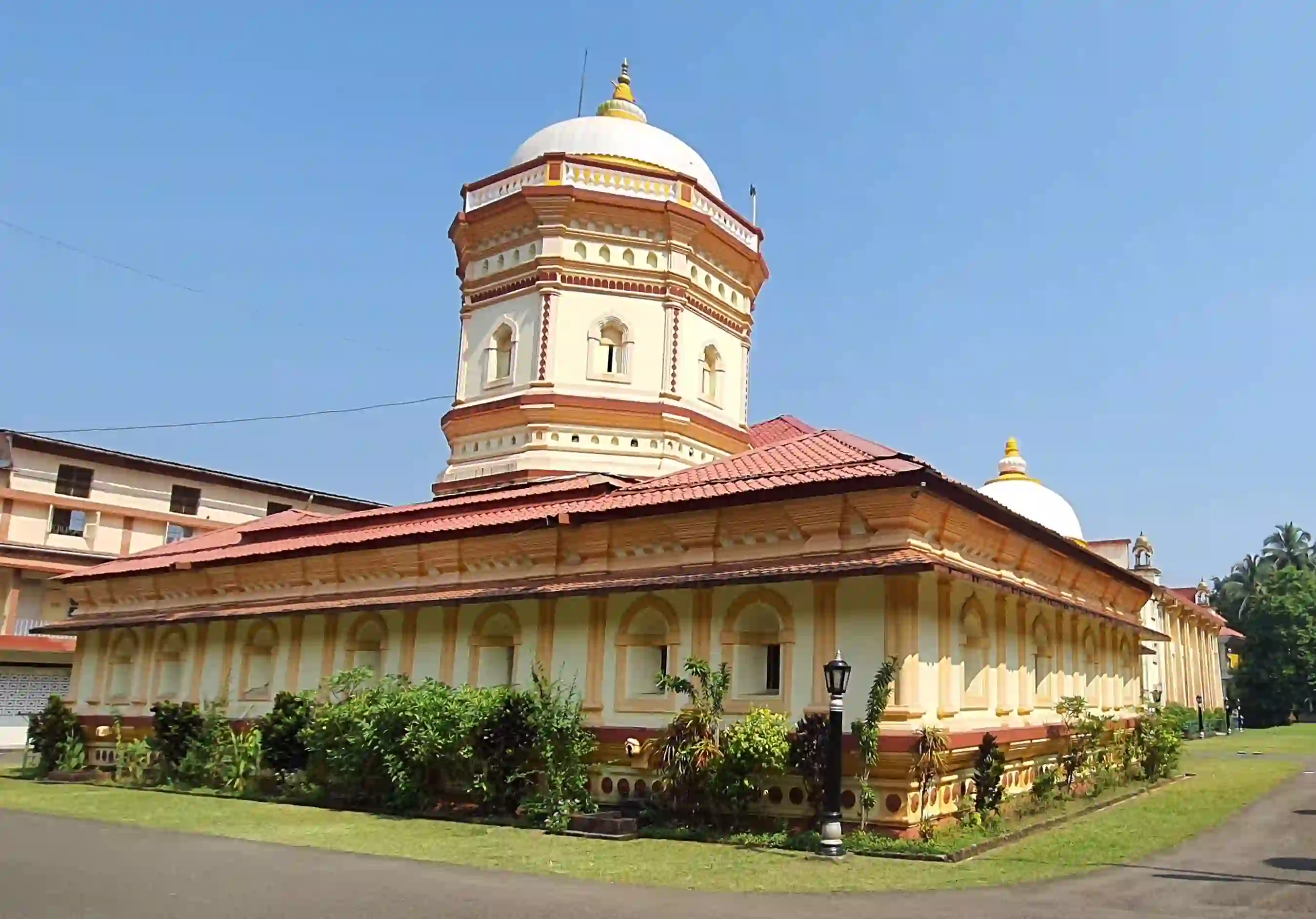
Śrī Rāmanātha Temple
This temple, a vibrant institution 435 years old, located at the centre of Ponda, houses Lord Śiva, worshipped as Śrī Rāmanātha. The deity had to be smuggled away to his present abode to escape violation by the Portuguese. Besides Lord Rāmanātha, the temple also houses Śrī Laxmi-Nārāyaṇa, Śrī Kāmākśi, Śrī Sidhanātha.

Shri Saptakoteshwar Temple
Saptakoteshwar is one of the major Śiva temples in Konkan. This ancient temple was renovated by Shiva Ji Maharaja in 1668 AD after falling under the Portuguese demolition in 1560 AD. This temple also houses Kālabhairava shrine and pādukās of Guru Dattātreya carved on the stone.

Shiva temple, Tambdi Surla
The only ancient temple left in Goa that was not destroyed by the invaders, the Śiva temple of Tambdi Surla, lies at the foot of the Western Ghat mountains near the source of the Mandovi river. An excellent example of Kadamba-Yādava architectural style, this temple carved from grey-black soapstone not only miraculously remained immune from attacks of the iconoclastic Portuguese reign but also from harsh weathering through the ages.
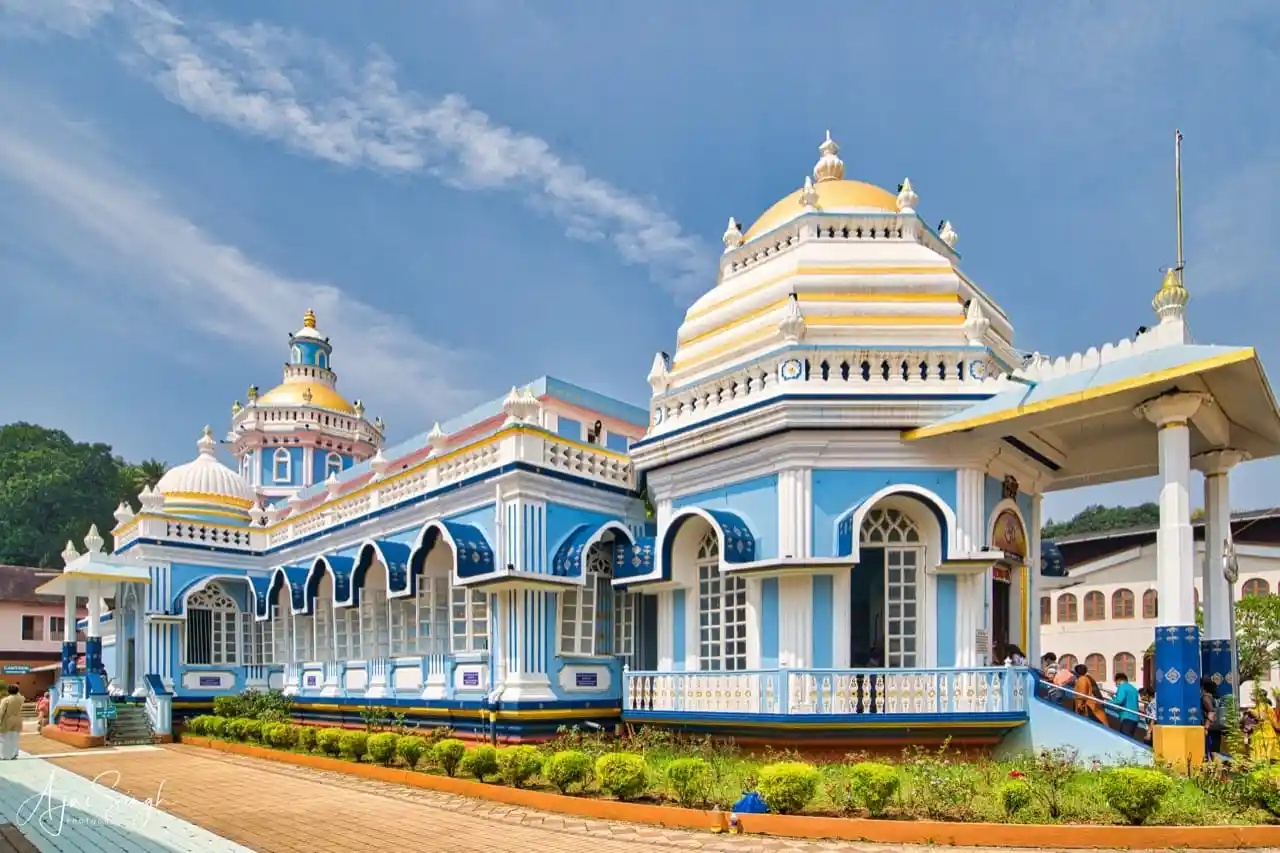
Śrī Mangeśa Temple
Śrī Mangeśa Temple in Goa - centre of development of the Gauḍa Sārasvat Brāhmaṇa community. The Mangeśa linga is said to have been consecrated by Lord Brahmā on the mountain of Mangireesh, from where it flowed to Madgaon. During the rule of the Portuguese, the temple of Mangeśa fell to the hands of the invaders. Fearing desecration, the Brāhmaṇas migrated the sacred linga to the Priol, where Śrī Mangeśa Temple today is.

Mahālasā Nārāyaṇī Temple
Mahālasā Nārāyaṇī Temple, dedicated to the Mohinī avatār of Śrī Viṣṇu. Here, the god has manifested in his 'ugra' or fiery avatar. In the garbhagṛha, Mohinī holds the severed head of Rāhu, with a tiger feasting on the dripping blood. She also holds Triśūla and Khaḍga, and a bowl to reserve the blood. Visitors find it immensely curious how this form of Mohinī has an uncanny resemblance to Devī Durgā.

Lakṣmīnārāyaṇa temple
Located deep inside coconut groves, with a vast puṣkariṇī within the complex, the Lakṣmīnārāyaṇa temple in Veling, dedicated to Narasimhā - the half-man half-lion Viṣnu & his consort Śrī Laxmi, is another old seat of the Sārasvatas in Goa.
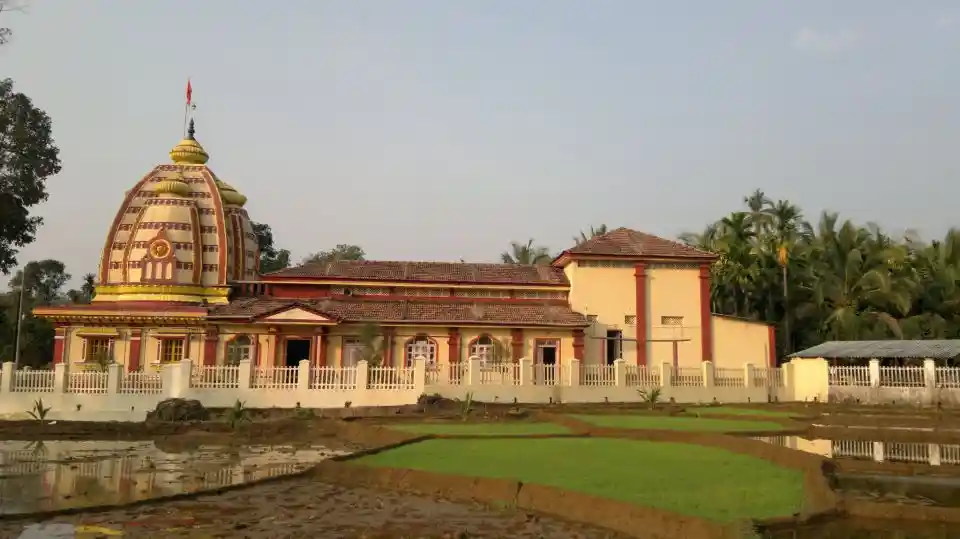
Brahma Karmali temple
Established originally at Karmali in Old Goa, this temple is one of the three rare shrines dedicated to Lord Brahma. The caturmukha Brahma vigraha here is an exquisite example of masterful sculpture. The Brahma Karmali temple of Goa is one of the 'refugee temples' found in the state, shifted to Sattari from Karmali -the original location, where it underwent vandalism at the hands of the Portuguese Christian invaders.

Arvalem Caves
Carved from an enormous laterite wedge of the 6th century, this is quite an architectural marvel. Alternatively, the Caves, having a resplendent waterfall and a temple of Lord Rudreśvara close by, are also popular as “Harvale”, a name derived from 'Harahalli'-the village of Śiva. The linga inside the caves suggests its maintenance by Śaivites at some point in history.
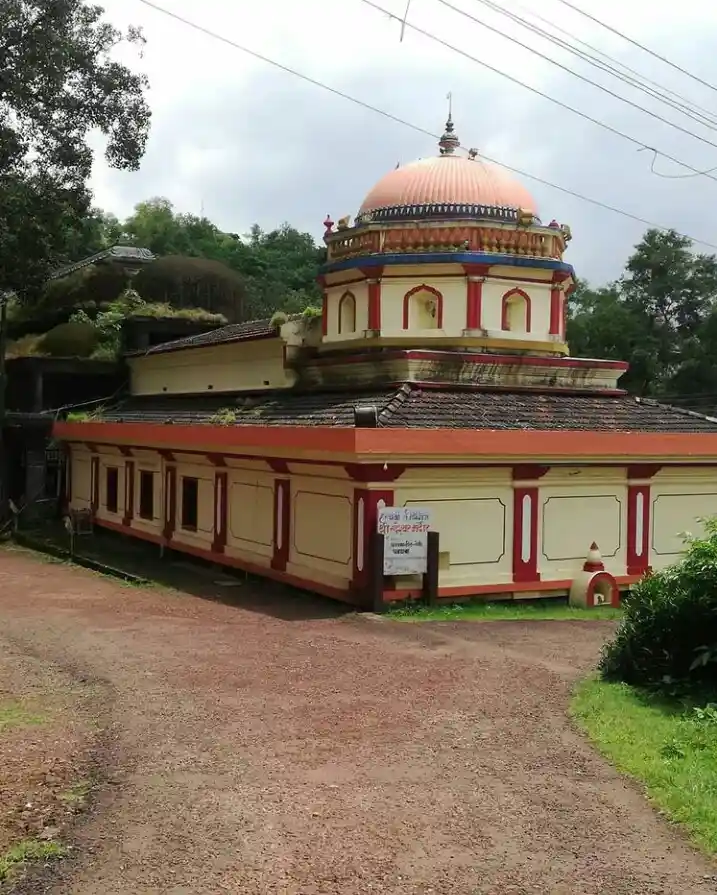
Rudreshvara Temple
Shri Rudreshwar Mandir is located just beside the famous Arvalem Waterfalls. Although the temple is newly built, this is an ancient kṣetra facing the pristine Arvalem waterfalls. This temple is an important site for pitṛa karma.

Devaki Kṛṣṇa temple
Mā Devaki holding the infant Kṛṣṇa in her arms in this temple is a peculiar depiction, hard to find elsewhere. The deities had been shifted from the original kṣetra of the temple to escape persecution at the time of Portuguese inquisition. One of its kind, the Devaki Kṛṣṇa temple is perhaps the only place in India where Śrī Kṛṣṇa is worshipped along with his mother, Devaki. The original kṣetra of this temple was the island village of 'Chodan' (also known as Chorao). Legend suggests that Devaki, after her release from Kamsa’s watch, came to Gomānchala parvata (Goa) in search of Kṛṣṇa. Growing a maternal tenderness, she desired to breastfeed her son, and the Lord obliged, taking his infant form.
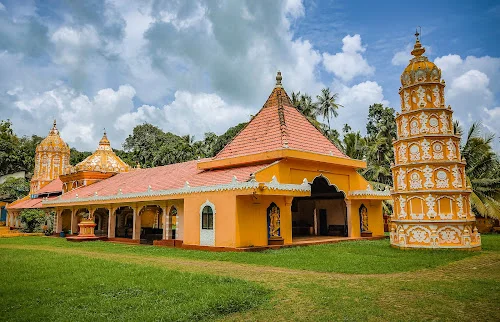
Ananta Śayanam Temple
Ananta Śayanam Temple of Ponda, Goa, where Lord Viṣṇu manifests in his reclining form. The deity rests in the garbhagṛha overflowing with water, the way Ananta Śayanam Viṣṇu is generally represented. Relocated to Savoiverem in Ponda after its demolition under Portuguese rule, the temple still stands undergoing many renovations over the years. The consecrated space reverberates with an aura of profound spiritual calm, immediately sensed as one steps inside.
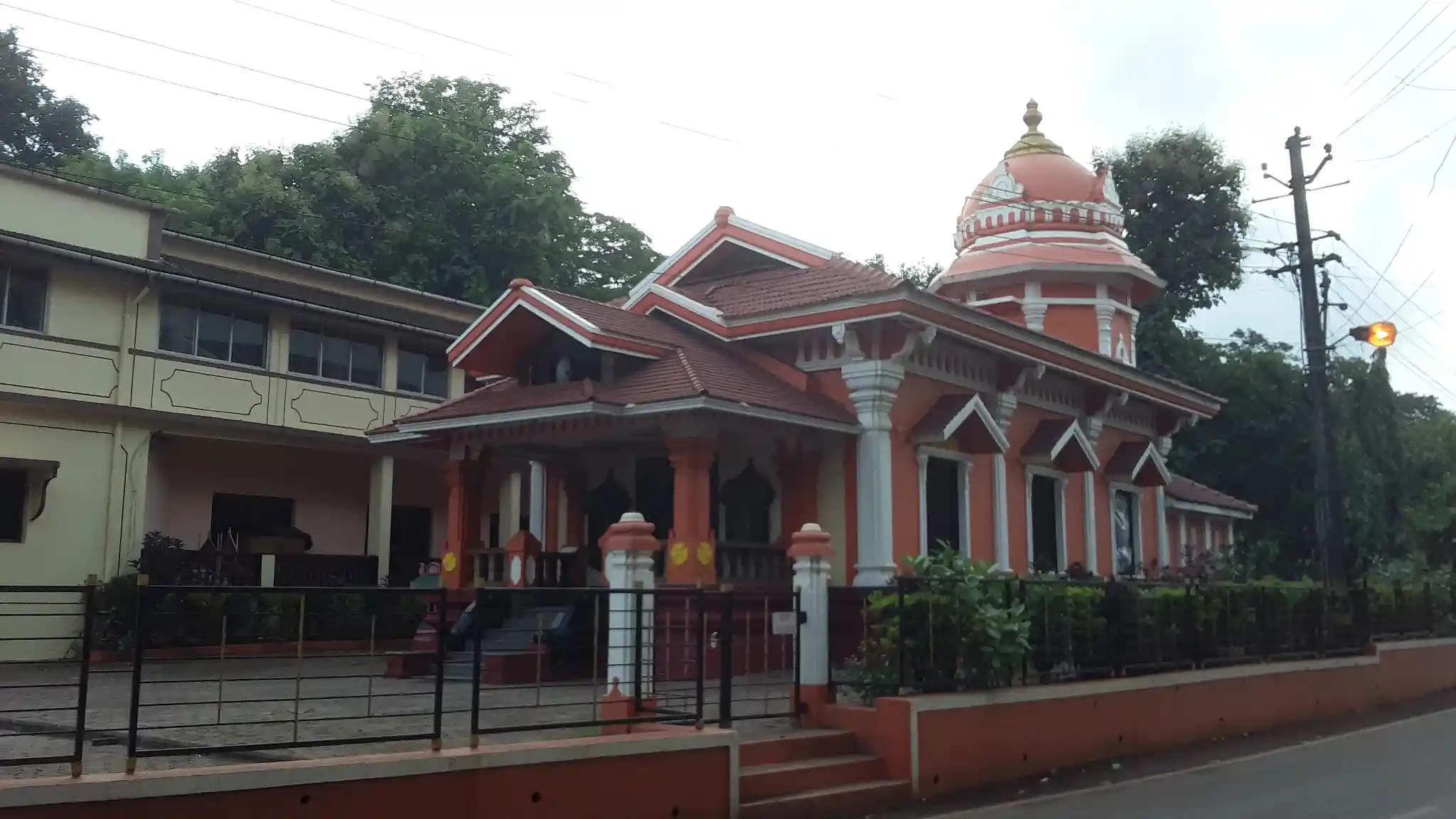
Maruti Temple
The Maruti Temple is situated on top of the Altinho hill and enshrines Hanumān as the presiding deity. One of the most beautiful temples in Goa, the vigraha of Hanumān can be viewed from the streets. The temple is lit up every night make it look beautiful from a hill. This temple is also famous for the annual jātrā which has been held from the year 1944.

Archaeological Museum
Bearing testimony to Goa's bloody history, the Archaeological Museum of Old Goa houses various vigrahas of Hindu gods and goddesses rescued from excavations at regions where most of the "refugee Hindu temples" were originally located.